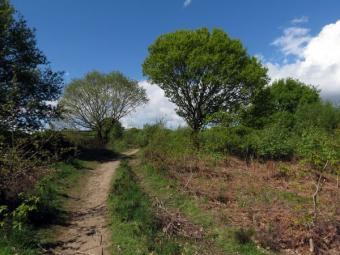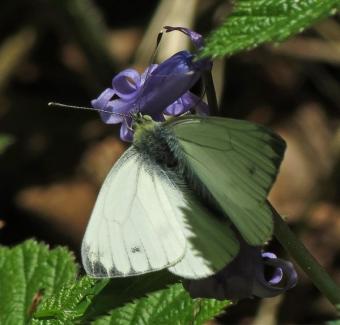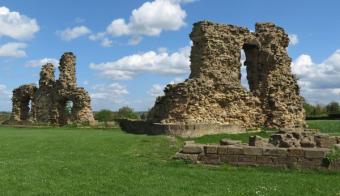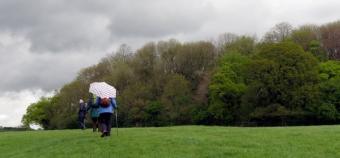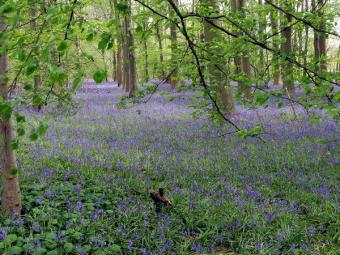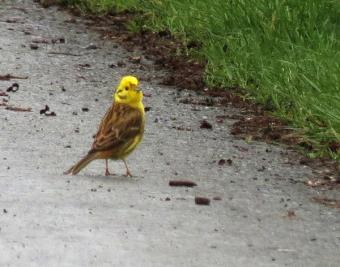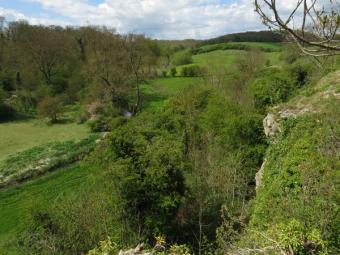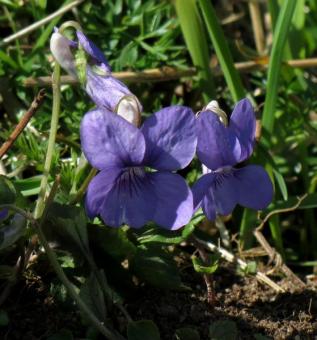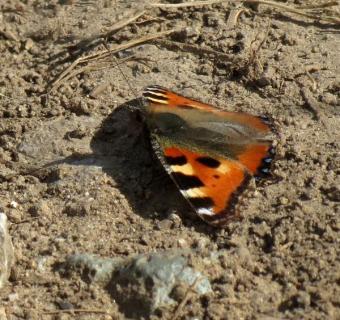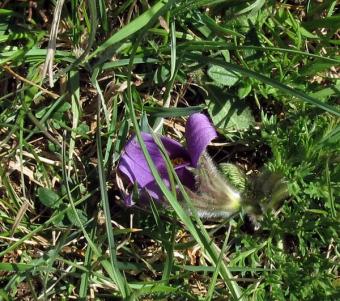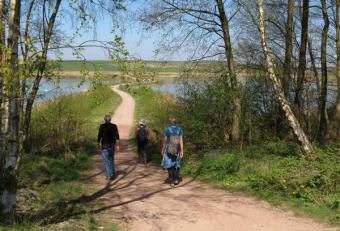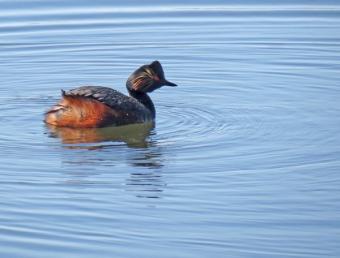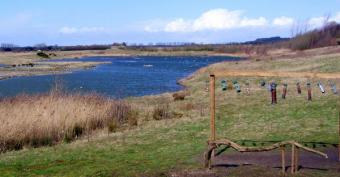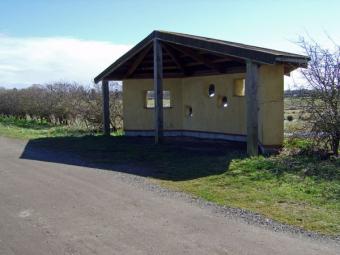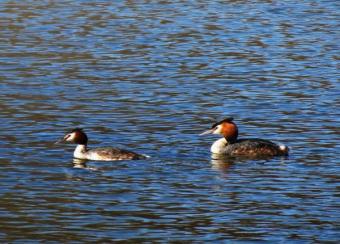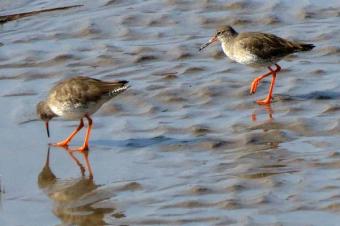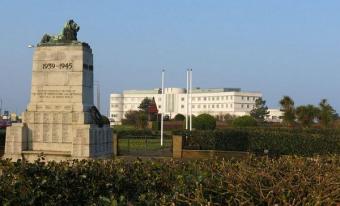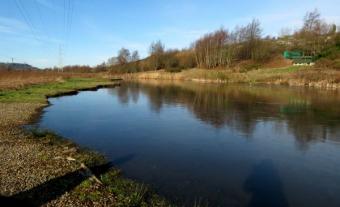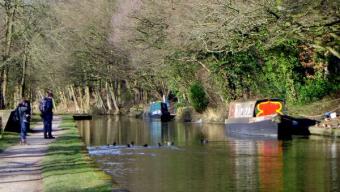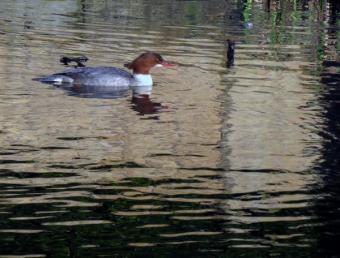WFV, Chellow Dene and Northcliffe Woods, 19th May 2015
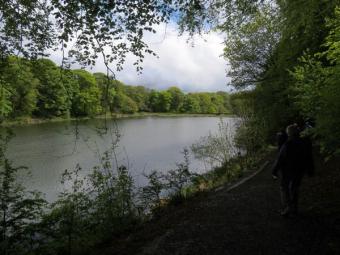 Chellow DeneA very small group of only 7 in the bus met up with 3 who had travelled by car for this week's local trip to Chellow Dene. When we arrived at the end of Chellow Lane the heavens opened with a heavy hail shower. As we sat and waited for it to pass we saw Lorna approaching the bus; she had arrived early by car and had already started exploring Chellow Dene.She was dripping wet. She took refuge in the bus with the rest of the group. Once the shower had passed we headed round Chellow Dene. One of the botanical quests was to locate rusty backed fern. It was thought that it may only be found on the far side of the reservoir wall but we saw it on a wall close to the entrance to the reservoir.
Chellow DeneA very small group of only 7 in the bus met up with 3 who had travelled by car for this week's local trip to Chellow Dene. When we arrived at the end of Chellow Lane the heavens opened with a heavy hail shower. As we sat and waited for it to pass we saw Lorna approaching the bus; she had arrived early by car and had already started exploring Chellow Dene.She was dripping wet. She took refuge in the bus with the rest of the group. Once the shower had passed we headed round Chellow Dene. One of the botanical quests was to locate rusty backed fern. It was thought that it may only be found on the far side of the reservoir wall but we saw it on a wall close to the entrance to the reservoir.We endured heavy showers scattered with bright spells as we did a circuit of the lower and upper reservoirs. Birding was unremarkable apart from sightings of great crested grebes with beautiful young grebes and a coot family with not so beautiful coot chicks. A solitary green veined white butterfly was seen.
The botanists were interested to see that the large bittercress had extended its range. Bitter vetch and greater woodrush were recorded. Ferns of note included black spleenwort and scaly male. 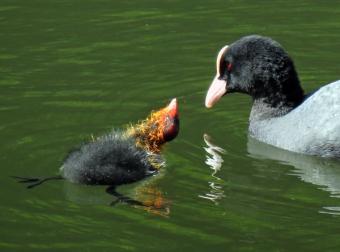 Are You Still There?
We had planned to have lunch in the bus if wet or outside if dry and then to call at Morrisons for a toilet stop, but we were delighted when Martin invited us to his house to eat our lunch. We were very grateful to Martin and his wife Jan for their hospitality; the hot drinks, biscuits and chocolates were such a treat. We all got rather too comfortable but we did finally get moving again for our second leg of the day; Northcliffe Woods. The woods still had a good display of bluebells and there was quite a number of large leaved avens. Dryads saddle was recorded. The showers persisted as we proceeded through the woods and into the park, heading back close to the allotments.
Over the whole day 104 flowers and ferns were recorded. It was a shame about the weather but we kept calm and carried on. Thanks to Joan and Maddy for organising the day.
Are You Still There?
We had planned to have lunch in the bus if wet or outside if dry and then to call at Morrisons for a toilet stop, but we were delighted when Martin invited us to his house to eat our lunch. We were very grateful to Martin and his wife Jan for their hospitality; the hot drinks, biscuits and chocolates were such a treat. We all got rather too comfortable but we did finally get moving again for our second leg of the day; Northcliffe Woods. The woods still had a good display of bluebells and there was quite a number of large leaved avens. Dryads saddle was recorded. The showers persisted as we proceeded through the woods and into the park, heading back close to the allotments.
Over the whole day 104 flowers and ferns were recorded. It was a shame about the weather but we kept calm and carried on. Thanks to Joan and Maddy for organising the day.
Sue

